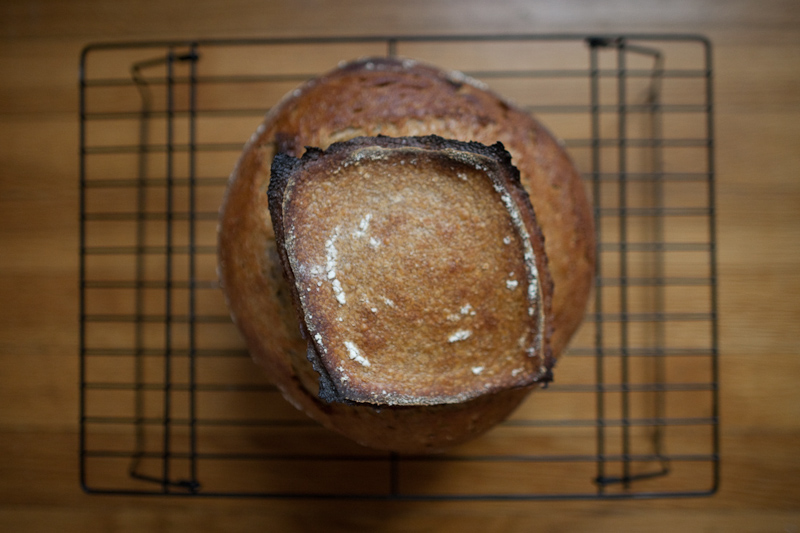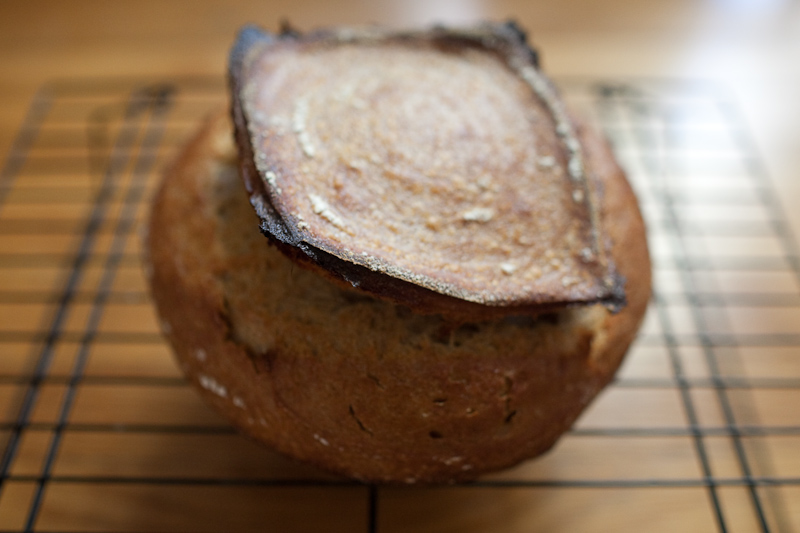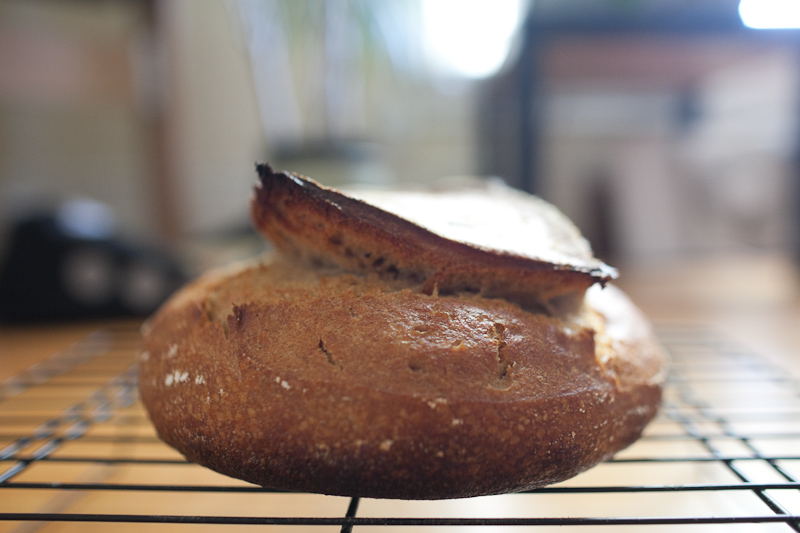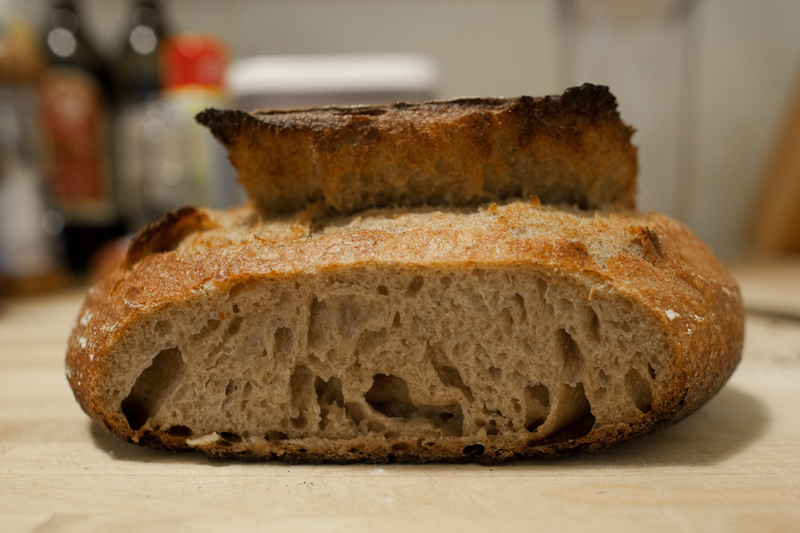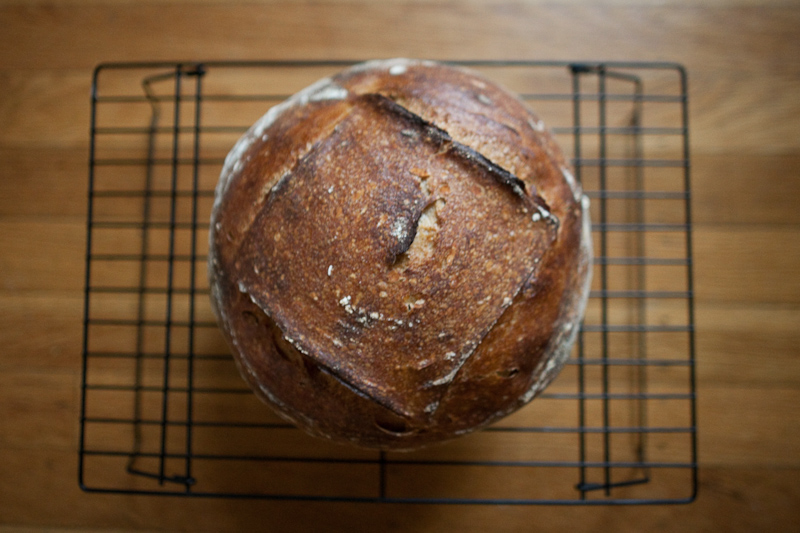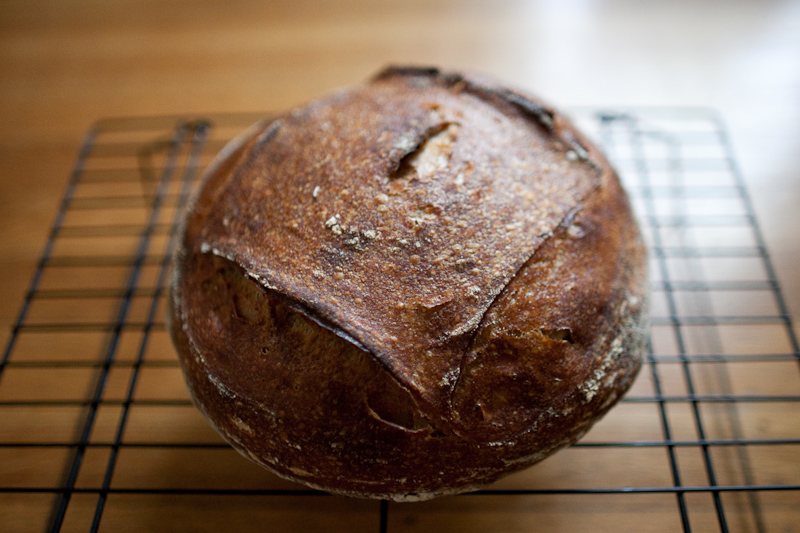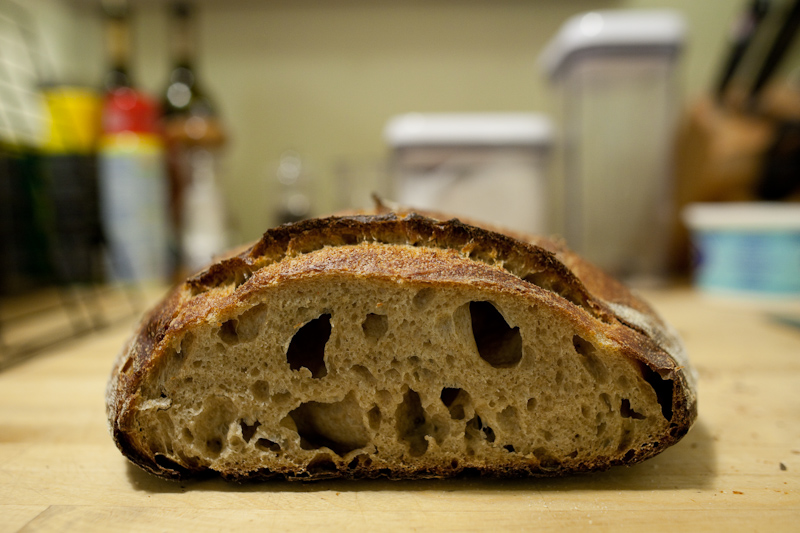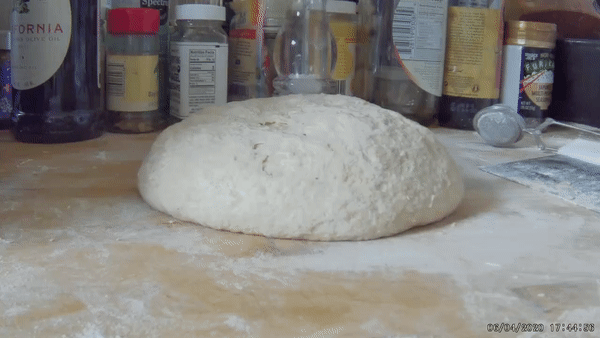
Here is a compilation of things I think I've learned about baking bread, sorted by category:
Starter
Starter doesn't rise or double in height
The problem:
Your starter doesn't rise. Generally this is caused by having a yeast and bacteria population that is too low.
Potential causes:
- You haven't given it enough time: If your starter is fairly new, it may take a number of days and regular feedings to make your starter healthy.
- Your starter is overripe: Eventually the byproducts of yeast and bacterial metabolic activity will create alcohols and acids that will start to kill off the yeast and bacteria that you are trying to cultivate. If your starter smells very sour, this may be the case.
- Other bad stuff is growing in there: With feedings at the right interval, you will cultivate a yeast and bacteria population that will prevent mold and other undesirable stuff from growing. If the balance is off and your yeast and bacteria population is depleted, other organisms can have the opportunity to grow. You can usually tell by smell.
How to fix it:
- Make sure your starter is active and doubling (or more ) between feedings. If your starter rises and then falls between feedings, you may need to feed your starter more regularly or determine actions that you can take to slow its activity, like reducing its temperature or changing your feeding ratio.
Related links:
- None yet
Sourdough starter smells bad
The problem:
Your sourdough starter smells bad. There are a lot of smell descriptors that are used to describe a good starter. Sometimes it smells nutty, fruity, sweet, sour, or even a little alcoholic. But it shouldn't smell like mold or body odor. Moldy starter smells awful.
Potential causes:
- The population of your yeast and bacteria isn't strong enough to prevent other organisms, like mold from growing.
- The walls of the starter container are not clean. Yeast and bacteria die off along the walls of your container, and then mold and other bad things grow.
How to fix it:
- Some advise starting over with a new starter.
- You may be able to "rescue" your starter. If there's mold growing in it, it may not be growing on more than just the surface. Some of the good yeasts and bacteria may be living in the bottom of your starter container. You can remove some of that, move it to a new jar, and then feed it and see how things go after a few feedings.
- Change starter containers once in a while.
Related links:
- None yet
Bulk Fermentation
Over-fermentation
The problem:
The weather was recently very warm, and I let a sourdough bulk fermentation go on for too long. I'd estimate that it got about 10 hours at 80F. The dough had doubled in volume, but it appears the acids and enzymes eventually destroy the gluten and leave you with a sticky, lumpy mess. Apparently, when the gluten breaks down, water is released, which makes the dough stickier. It was a pain to handle, and didn't hold its shape at all during pre-shaping, as this time lapse shows: (5 minutes of time is condensed into a few seconds)

There's no strength in the dough at all, it's lumpy and shaggy, very wet, and falls apart almost immediately. This is different than overproofing, as the dough was falling apart before making it to the proofing stage.
How to fix it:
- If it's too hot, try using cold water in your mix to slow down fermentation
- Find a cooler place for the bulk fermentation
- Ferment for a shorter amount of time
- Use less leaven/levain or starter
Related links:
- "Sourdough gluten problems after bulk fermentation" http://www.thefreshloaf.com/node/54942/sourdough-gluten-problems-after-bulk-fermentation
- "Overfermented sourdough dough with minimal rise" http://www.thefreshloaf.com/node/58088/overfermented-sourdough-dough-minimal-rise
Baking
Loaf too flat, too dense, or no oven spring
The problem:
No large airy holes, very dense and flat loaf. Possibly decent flavor, but dense and gummy on the inside.
This might have many potential causes which are generally related to a lack of strength in the loaf and a lack of bubbles and CO2 :
- Weak yeast or sourdough starter
- Shaping technique did not generate enough tension in the loaf
- If there's very little yeast activity at all, you'll notice poor color development in the crust and a "raw" flavor
How to fix it:
- Make sure your starter is active and doubling (or more ) between feedings
- Pre-shape and shape your dough to generate adequate tension and gluten deveopment
Related links:
- None yet
Loaf explodes, blows out, or tears open
The problem:
Hot steam and carbon dioxide have nowhere to go during the bake, and eventually cause your loaf to blowout or explode.
How to fix it:
- Score the top of your loaf with a lame. This will help guide the loaf when expanding and hopefully provide you with more oven spring.
Related links:
- None yet

